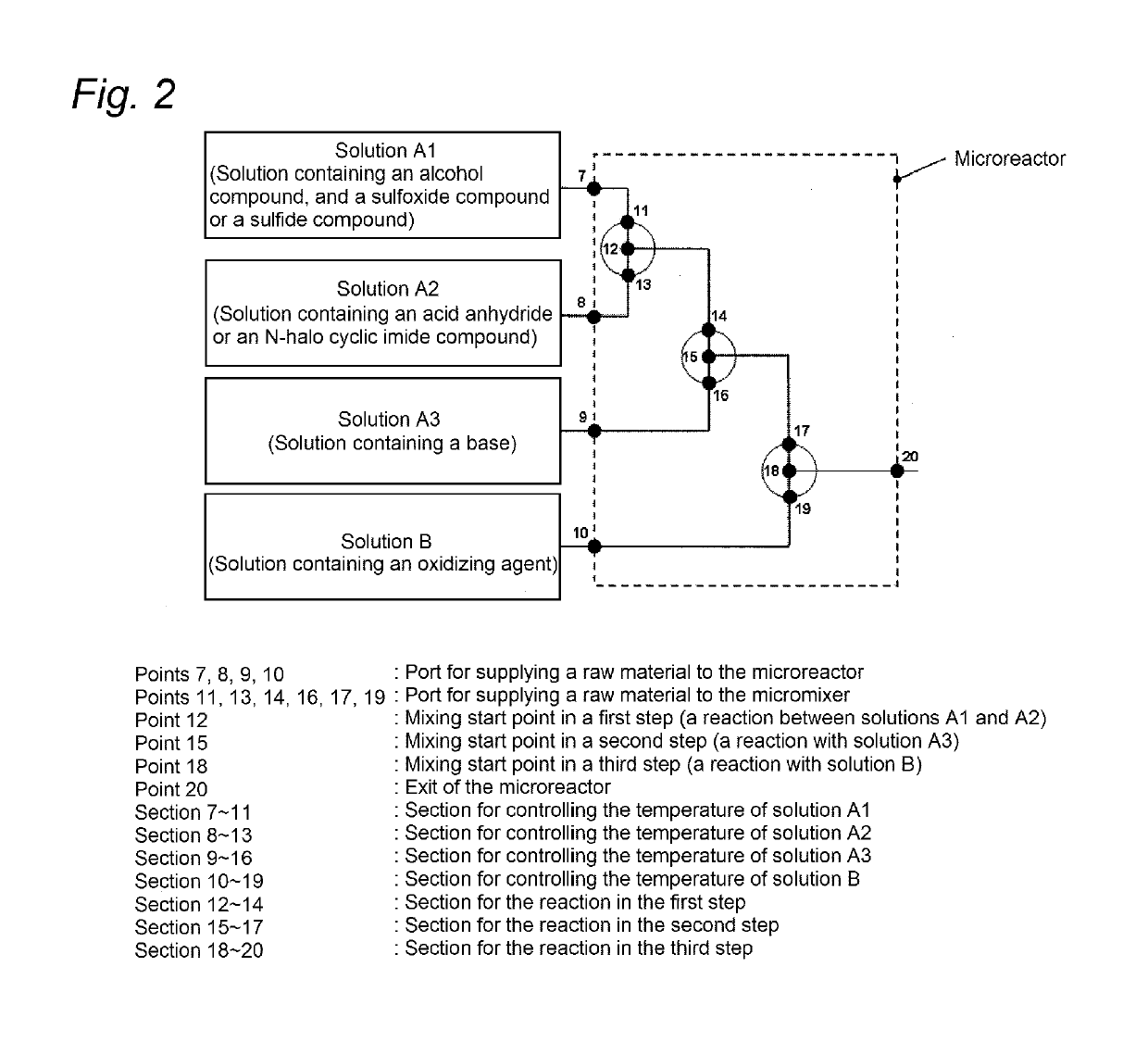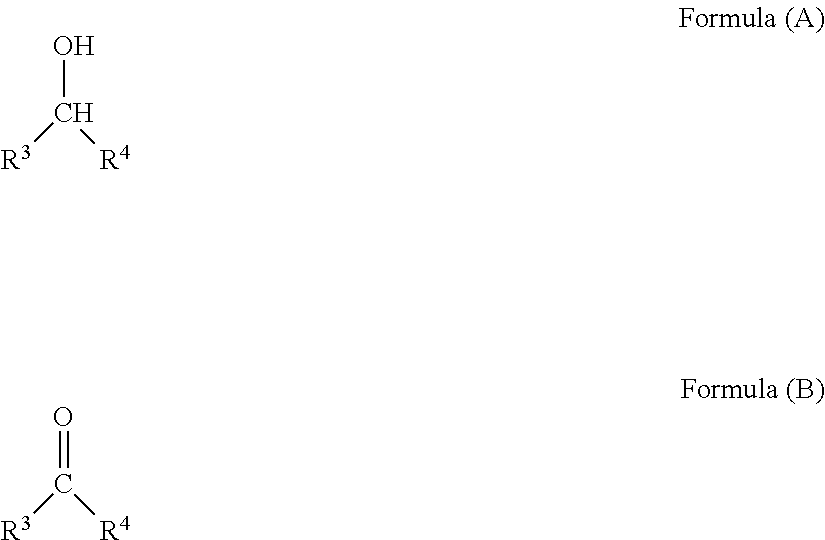Method of producing organic compound
a technology of organic compound and organic solvent, which is applied in the field of producing organic compound, can solve the problems of enlargement of manufacturing equipment, pollution of working environment and working efficiency reduction, and burden on the environment and human health, and achieves the effect of reducing environmental burden and reducing environmental burden
- Summary
- Abstract
- Description
- Claims
- Application Information
AI Technical Summary
Benefits of technology
Problems solved by technology
Method used
Image
Examples
example 1
Deodorization Step of 3′-dimethylaminoacetophenone Solution Using Microreactor
[0237]The deodorization step was performed using the reactor shown in FIG. 1.
[0238]The 3′-dimethylaminoacetophenone solution (solution A) containing the malodorous material was prepared referring to the method described in J. Org. Chem., vol. 41, p. 957-962 (1976). In a methylene chloride solvent at −78° C., Swern oxidation reaction was performed using 10 mL of 1-(3-dimethylaminophenyl)ethanol (0.3 mol / L), 0.586 g of dimethyl sulfoxide, 1.575 g of trifluoroacetic anhydride, and 1.163 g of diisopropylethylamine, so that the desired ketone compound was obtained (reaction yield 85%) and then used. The oxidizing agent solution (solution B) used was so prepared that the amount of a sodium hypochlorite aqueous solution (concentration 13.3%) became 1.2 molar equivalent based on the amount of trifluoroacetic anhydride. The solutions A and B were each sucked into a glass syringe and then fed to the microreactor usi...
examples 2 to 16
[0239]Examples 2 to 16 were performed under the same conditions as those in Example 1, except that the reaction temperature and the retention time were changed to those shown in Table 1 below.
examples 17 to 21
[0246]Examples 17 to 21 were performed under the same conditions as those in Example 1, except that the oxidizing agent was changed to that shown in Table 2 below.
[0247]Examples 18 to 21 were performed using methylene chloride solutions.
[0248]These results are comprehensively shown in Table 2.
[0249]
TABLE 2Ex’sTotalResidualNos.Kind of oxidizing agentyield (%)DMS (%)Ex 17Peracetic acid / hydrogen peroxide790.1solutionEx 18N-Chlorosuccinimide850.1Ex 19N-Bromosuccinimide840.1Ex 201,3-Dichloro-5,5-dimethylhydantoin830.1Ex 211,3-Dibromo-5,5-dimethylhydantoin820.1‘Ex’ means Example according to this invention.
PUM
| Property | Measurement | Unit |
|---|---|---|
| reaction temperature | aaaaa | aaaaa |
| time | aaaaa | aaaaa |
| temperature | aaaaa | aaaaa |
Abstract
Description
Claims
Application Information
 Login to View More
Login to View More - R&D
- Intellectual Property
- Life Sciences
- Materials
- Tech Scout
- Unparalleled Data Quality
- Higher Quality Content
- 60% Fewer Hallucinations
Browse by: Latest US Patents, China's latest patents, Technical Efficacy Thesaurus, Application Domain, Technology Topic, Popular Technical Reports.
© 2025 PatSnap. All rights reserved.Legal|Privacy policy|Modern Slavery Act Transparency Statement|Sitemap|About US| Contact US: help@patsnap.com



